Keeping the omega-3 effect in vegetable fed salmon
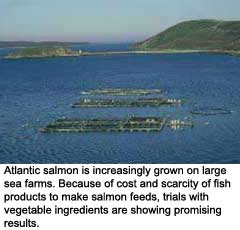
Less than 10 years ago, the carnivorous salmon could not tolerate the slightest amount of vegetable matter in their diet. Today, they thrive on balanced feeds comprising of up to 70-80% plant ingredients. How was this made possible, and are salmon still as healthy?
The Aquaculture Protein Centre (APC), a research centre based at the Norwegian University of Life Sciences (UMB), has played a central role in the rapid advances made in fish feed technology in recent years. Now researchers at APC are looking to feed salmon with lupin seeds, logging residue and North Sea natural gas. The growth of the aquaculture industry – in addition to requirements designed to make aquaculture more sustainable – have fuelled demand for APC’s research. From 2009 to 2010 alone, the centre’s budget has expanded by over NOK 10 million (€1.28m), to close to NOK 44 million (€5.65m).
“There are many factors that go into the making of good fish feed,” says Professor Margareth Øverland, director of APC. “We have to focus on fish health, particularly in terms of the digestive system. We must also make sure that the fish can utilise the feed’s proteins well. Just as important, the feed has to taste good so the fish actually want to eat it.”
Heat treatment
Eight years ago, when researchers at APC began trials feeding small proportions of soybeans to salmon (carnivores by nature), the fish developed serious intestinal damage. Today, production salmon can consume feed with 50% vegetable protein without their growth being inhibited. This proportion can likely be increased once the researchers are confident that the long-term effects and interactions between various vegetable sources are safe.“Our field has been developing very rapidly,” explains Øverland. “We now know that the key to getting salmon to eat these vegetable proteins is to create a mixture of different plants. In addition, new treatment methods using heat and additives have been developed that allow salmon to utilise the protein in peas and soybeans just as efficiently as the protein in fishmeal. At APC we have worked extensively on determining the exact temperature for the heat treatment. This optimises the balance between deactivating various anti-nutrients and utilising the nutrients of the feed.”She adds that one of the centre’s research fellows is working on raising that temperature (currently 120°C) for the purpose of deactivating even more of the anti-nutrients without reducing the feeds’ nutritional content. It can also go the wrong. As an example Øverland states that much of the dog food and cat food sold in shops is processed at such high temperatures that pets can utilise less than half of the protein in it.
New treatments for soy
Soybeans, being the least costly protein product on the world market, are a desirable alternative for animal feed. APC has discovered new methods of treating soybeans to allow salmon to utilise a higher proportion of a feed’s soy protein. Salmon, however, digest peas better than soybeans, since peas contain only half as many anti-nutrients – a fact that has made peas an essential ingredient in today’s salmon feeds. “Salmon feeds now often contain three to six different vegetable additives,” says Øverland.APC has focused much of its attention on anti-nutrients, which are part of the plant world’s defence strategy to ward off insects and other pests and to avoid being eaten by the larger animals. Lupin seeds, for example, contain large amounts of anti-nutrient alkaloids as a defence against grazing animals. Alkaloids can make lupin seeds taste bitter, as well as reduce feed uptake in animals such as salmon. Researchers at APC have carried out numerous trials to determine just how much of these alkaloids salmon can tolerate. This knowledge will help plant researchers to produce lupin seeds with an alkaloid content that is palatable to salmon yet still allows the plants to retain their defences against insects and other pests.APC is working diligently to identify which anti-nutrients in soybeans lead to health problems in salmon. During their search, researchers have discovered two special anti-nutrients that may explain the inflammatory response of the salmon intestine when digesting soybeans. This inflammation is problematic both ethically and economically.“Rapeseed is a low-cost plant that is produced large-scale in Norway,” continues Øverland. “But rapeseed, too, is high in anti-nutrients. We have managed to reduce them through fermentation, with very encouraging results. Thus, Norwegian-produced rapeseed has potential as a salmon feed alternative to US soybeans or Canadian peas. Potatoes are another crop we can produce at low cost here in Norway that may someday be used in salmon feed.”
Gas and pulp
Another important research field at APC involves microbial ingredients for use in fish feed. Liv Torunn Mydland of APC’s Feed Ingredients and Processing Section elaborates: “Bacteria, yeast and microalgae are all promising organisms as feed ingredients. Our research on them so far has been fruitful. We have successfully developed new products that promote good growth in salmon without negatively affecting their health. Bacteria can live on natural gas, and yeast thrives on biodegrading wood pulp. In the future they could provide protein for animal feed, saving arable land for crops. We could also use low-value by-products such as straw.”
APC’s researchers work with an eye to raising the sustainability of aquaculture, envisaging a high-value yield of healthy food for humans in the form of salmon meat from the input of natural gas or pulp. “We can also produce edible microalgae on a diet consisting primarily of CO2, sunlight, and a few minerals and vitamins. Imagine what that could mean for the future,” Torunn Mydland adds.
Yet another promising new field of research at APC is using krill in fish feed. Krill is the most abundant animal species in the world’s oceans. Far down in the food chain, it eats mainly phytoplankton. The volume of just one species of Antarctic krill alone is estimated at 500 million tonnes; it is considered sustainable to harvest at least five million tonnes of krill annually from the Southern Ocean, according to CCAMLR, the international commission to manage Antarctic marine living resources. At present, the annual harvest is just 100,000 tonnes.
“Krill is a terrific raw material, rich in protein and fat,” confirms Øverland, adding that APC researchers have carried out experiments processing a total of 25 tonnes of krill for fish feed. “We’ve learned a great deal about how to do this.”
Pea and soybean do not mix well
Marie Hillestad, senior scientist at BioMar in Trondheim, has headed a project that mapped various protein-rich plants as potential feed ingredients for salmon and rainbow trout. “In our project we studied saponins in particular, which are well-known anti-nutrients in soybeans,” explains Hillestad. “Fish feed with relatively moderate proportions of soybeans with saponins intact can trigger serious intestinal reactions in salmon. Saponins cause irritation of the mucosa and leakage in the intestinal membranes.”
Dr Hillestad is excited about their findings: “We observed marked impacts on the fish in our trials, depending on the type of protein source the saponins were combined with. Saponins and pea protein, for example, are a very bad combination for both salmon and rainbow trout. But if we feed the fish pea protein without combining it with saponins, the peas are an excellent protein substitute for fishmeal.”
“It’s no problem for the fish to eat feed in which pea protein comprises a large proportion of the protein content. But feed with pea protein must not contain soybeans or other vegetable ingredients that are high in saponins,” she cautions. “Alternatively, the saponins can be removed from the soybeans.”
The researchers do not yet know why this pea protein/saponin combination spells trouble for the fish. There are a number of reasons why peas are an ingredient that feed producers seek to use in greater quantity. One is that pea plants are capable of nitrogen fixation, which reduces the need for artificial fertiliser, making peas a particularly sustainable crop for agriculture.
“We need different, better methods to understand why this combination of soybean saponins and peas has such ill effects. We must be able to quantify the saponins in the vegetable ingredients, which we have not yet succeeded in doing,” confides Hillestad, adding that more than once the team thought it was on the verge of a breakthrough, only to be disappointed.The researchers did discover that saponins in themselves do not necessarily cause appreciable problems in the fish. It is the combination of saponins with certain other potential vegetable feed ingredients that create the major difficulties.
AquaMax project
A large international research project, AquaMax, has studied the effects on the nutritional benefits of fish raised on a diet that substitutes vegetable feed ingredients for some of the marine ingredients. The project, a collaboration between 33 partners from 14 countries, was headed by the National Institute of Nutrition and Seafood Research (NIFES) in Norway. The objective was to develop fish feeds using maximum proportions of vegetable-based ingredients – while still safeguarding fish welfare and ensuring that the fish products remain safe and healthful for consumers.
The AquaMax researchers conclude that fully 70% of the fish oil and 80% of the marine proteins in conventional feed can be replaced with vegetable ingredients without any adverse effect on fish health. Even with such a radically altered diet, salmon appear to retain their value as a good source of fatty acids that are healthy for humans.
“Exchanging vegetable ingredients for fishmeal and fish oil involves taking a great many feed components into account,” explains project coordinator Øyvind Lie, Director of NIFES.Eating seafood can be seen as something of a trade-off. “We know we risk losing some of the beneficial marine omega-3 fatty acids in fish fat by altering the feed composition. Compared to vegetable sources, however, those same marine ingredients may contain more pollutants such as dioxins, PCBs and brominated flame retardants. We have observed substantially lowered amounts of dioxins in fish that are fed vegetable ingredients.”The AquaMax project examined whether production salmon can still be considered healthful food when raised on roughly 50% vegetable feed. “The risk of ingesting contaminants must be weighed against the health benefits of eating seafood rich in the marine omega-3 fatty acids EPA and DHA,” Lie points out. “This is a dilemma for pregnant women in particular.”
Pregnant women
The AquaMax researchers chose to focus on precisely that group: expectant mothers. “Pregnant women and the children they are carrying are most vulnerable to pollutants such as dioxins – yet they also have the greatest requirement for the nutrients in fish,” explains Lie. “Marine omega-3 fatty acids are especially important for both mother and baby.”In designing a diet for pregnant subjects, the researchers raised salmon on a customised feed in which large proportions of marine ingredients were replaced with vegetable meal. The salmon feed still contained some marine ingredients. “The results were very encouraging. In the group that ate the test salmon fillets, omega-3 levels were elevated in both the mothers and their babies. Even though these test salmon had received less omega-3 through a feed based mainly on vegetable ingredients, the salmon meat still provided an excellent source of the healthful fatty acids.”
Vegetable ingredients used in fish feed do contain pollutants, but the AquaMax project’s preliminary results indicate that not much of these are carried over into the actual fish fillets. Comparatively more pollutants are transmitted from fish ingredients.
Basic information written by Bård Amundsen/Anne Ditlefsen, Research Council of Norway. Translation: Darren McKellep/Carol B. Eckmann. Editing and summarising: Dick Ziggers
Join 26,000+ subscribers
Subscribe to our newsletter to stay updated about all the need-to-know content in the feed sector, three times a week. Beheer
Beheer

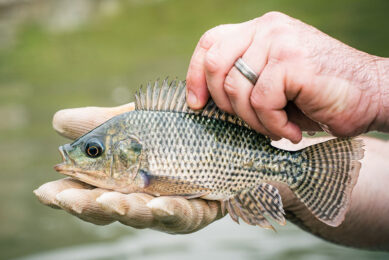
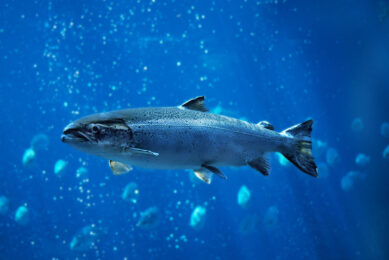
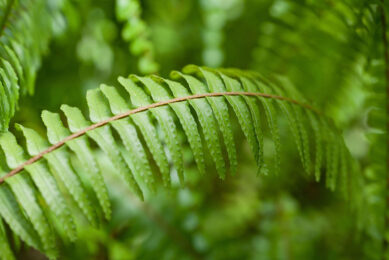
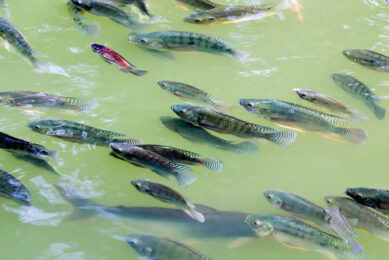




 WP Admin
WP Admin  Bewerk bericht
Bewerk bericht